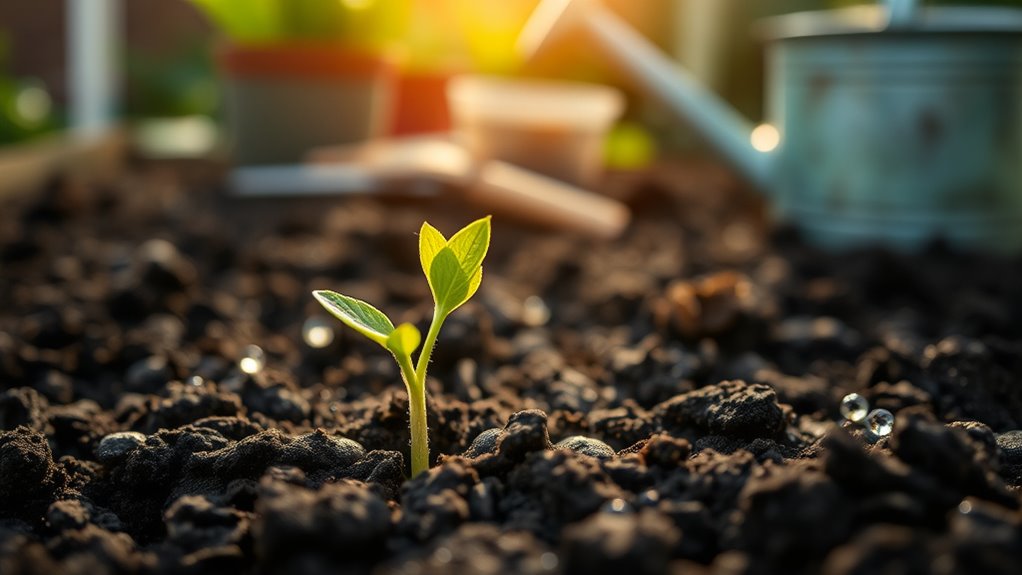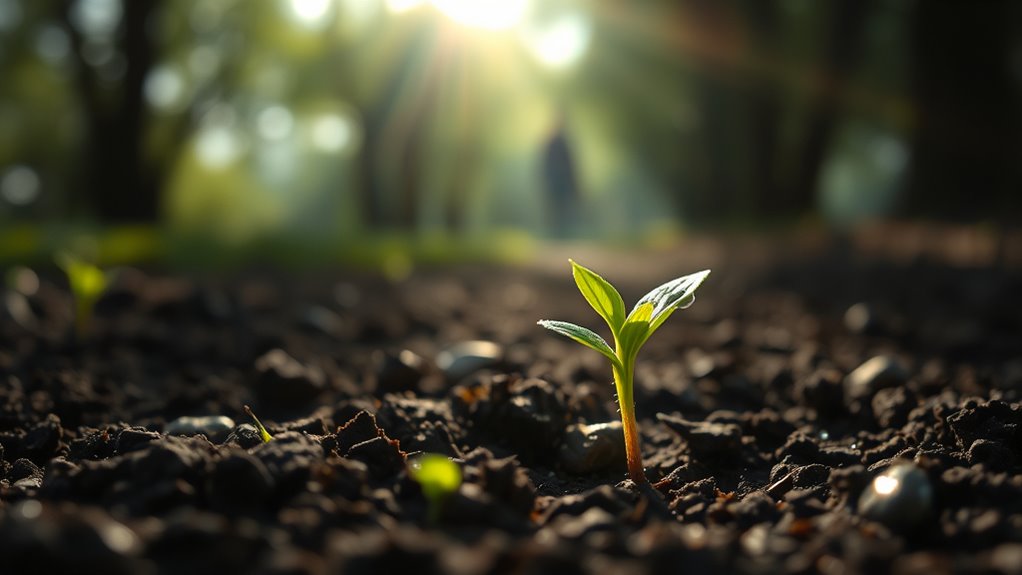Keystone habits are small, intentional changes that can spark big improvements in your life. By focusing on just one or two habits, like exercising or journaling, you set off a chain reaction that influences your environment, mindset, and routines. These habits build momentum, making positive behaviors feel natural over time. Keep exploring, and you’ll discover how these tiny adjustments can create lasting, powerful transformation in your day-to-day life.
Key Takeaways
- Small, consistent keystone habits can trigger widespread positive changes across multiple areas of life.
- These habits influence environment, mindset, and routines, creating a foundation for lasting transformation.
- Focusing on a few key habits promotes automatic behaviors and builds momentum over time.
- Keystone habits shape identity and reinforce self-image, making healthy behaviors feel natural.
- Starting small increases sustainability and motivation, leading to significant long-term wins.

Have you ever wondered how small changes can trigger widespread improvements in your life? It’s a fascinating concept that hinges on the power of keystone habits—those specific routines that set off a chain reaction, influencing other behaviors and creating a ripple effect of positive change. When you focus on establishing a keystone habit, you’re not just adding a new routine; you’re encouraging a form of habit formation that sparks behavioral change across different areas of your life. These habits act as catalysts, making it easier for you to adopt healthier, more productive, or more disciplined behaviors without feeling overwhelmed.
Small changes can ignite widespread positive change through keystone habits that influence multiple areas of your life.
The core idea behind keystone habits is that they don’t operate in isolation. Instead, they influence your environment, your mindset, and your routines, creating a foundation for broader transformation. For example, committing to regular exercise can lead to better dietary choices, improved sleep patterns, and increased motivation to complete daily tasks. Because these habits shape your identity and reinforce your self-image, they make behavioral change feel more natural rather than forced. When you start with a simple, manageable keystone habit, you set the stage for building momentum in other areas, making it easier to sustain long-term progress.
Getting started with keystone habits requires understanding that small, consistent actions can have outsized impacts. It’s tempting to overhaul your entire routine overnight, but real change happens gradually. By focusing on one or two keystone habits—like waking up early or journaling each morning—you create a foundation that supports multiple other improvements. Over time, these small adjustments become ingrained in your routine, and the behavioral change becomes less effortful because it’s woven into your daily life. This process of habit formation is essential; it transforms deliberate effort into automatic behavior, which is the key to lasting change.
Moreover, keystone habits often influence your environment and social circles, reinforcing positive behaviors through your surroundings and relationships. For instance, if you start preparing healthy meals every Sunday, you’re more likely to eat nutritious food throughout the week, and friends may even join you, creating a supportive community. The power of these habits lies in their ability to reshape your identity, making the behaviors feel like a natural part of who you are. As you see the benefits accumulate, it becomes easier to stay committed and expand on these small wins, ultimately leading to meaningful, lasting change. In essence, keystone habits are your secret weapon for transforming your life through small, impactful steps. Incorporating the concept of color accuracy in projectors can also enhance your visual experience and reinforce positive routines around home entertainment.
Frequently Asked Questions
How Long Does It Take to See Results From Keystone Habits?
You can start noticing results from keystone habits within a few weeks, but it depends on your habit formation and consistency. The key is maintaining regularity; the more consistent you are, the faster you’ll see positive changes. Typically, it takes about 21 to 66 days to establish a new habit, but real results often become clear after several weeks of sustained habit consistency, transforming small changes into significant wins.
Can Keystone Habits Work for Children and Teens?
Yes, keystone habits can work for children and teens, positively influencing their development and habit formation. You can help your child build these habits by encouraging consistent routines like reading, exercise, or chores. Over time, these small changes foster discipline, improve self-control, and promote better decision-making. Be patient, as habit formation varies, but with support, your child can experience meaningful growth and lasting success through keystone habits.
What Are Common Mistakes When Implementing Keystone Habits?
You often face habit formation and consistency challenges when implementing keystone habits, and a common mistake is trying to change too much at once. About 80% of habit failure stems from inconsistent effort. To succeed, focus on one keystone habit, stay consistent, and avoid overwhelming yourself. This targeted approach helps build momentum, making it easier to maintain the new behavior and see lasting results.
How Do Keystone Habits Differ Across Cultures?
You’ll find that keystone habits differ across cultures because cultural influences shape what’s valued and how habits are adopted. In some societies, community engagement drives habits, while others focus on individual discipline. When practicing habit adaptation, you need to take into account these cultural nuances to make habits meaningful and sustainable. Recognizing diverse cultural influences helps you tailor keystone habits, increasing your chances of long-term success and positive change.
Can Keystone Habits Replace Traditional Goal-Setting Methods?
You can think of keystone habits as the secret sauce in habit formation and behavioral change. They might not fully replace traditional goal-setting methods, but they can set the stage for big wins. By focusing on small, impactful habits, you create a ripple effect that naturally aligns with your goals. So, while they don’t replace goal-setting, keystone habits can be a powerful complement to help you stay on track and make progress.
Conclusion
Now that you understand the power of keystone habits, imagine the possibilities when you start small. Will you open a chain reaction of positive changes, or let those habits slip away? The choice is yours, and the future’s quietly waiting. One tiny shift could lead to something much bigger than you ever expected. Are you ready to take that first step? The next chapter of your transformation might just be one habit away.










